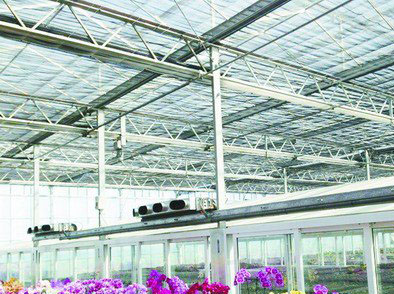Geraniums in clusters of flowers
Pelargonium, also known as red wax, hydrangea, for close to the cattle seedling family perennial evergreen herbs or sub-shrub flowers, because of its beautiful flowers, rich colors, easy to plant, and by the masses of love.
(1) Common varieties include single and double petals.
1. Hoof Pelargonium: The edge of the leaf has a hoof light brown halo ring, which can be used for viewing leaves. The flowers also have single petals and double petals. The flowers are also very beautiful. Other characteristics are the same as those of single-petal Pelargonium.
2. Shield leaf geranium: also known as tendril geranium, stem is tendril, leaf is shield shape, almost no hair, can be used for vertical greening, flowers have single and double petals, other characteristics are the same as single petal geranium.
3, butterfly geranium: also known as flower geranium, butterfly, leaves are slightly smaller and have deeper wrinkles, leaf margin is notched serrated, the number of flowers on the inflorescence is slightly less, but the flowers are larger, the stem is thick, the flowers have single and double petals, flower shape, color and general geranium have no big difference.
4, geranium: also known as geranium, touch incense, often cultivated as a spice crop, stem short thick, old stem is black brown, leaves are heart-shaped, slightly wrinkled. The leaves are fragrant and can extract essence. After touching the leaves, the hands will be stained with fragrance, so it is named "touch fragrance". Flower clusters are borne on stolons, white with pale pink, the size of mung beans, sometimes bearing fruit after flowering.
(2) Cultivation methods:
Pelargonium growth temperature is 10~30℃, temperature above 35℃ or below 10℃ for a long time will cause it to enter dormant state, below 3℃ will cause freezing damage. It is not very strict with the soil requirements, with pastoral soil, humus soil, organic fertilizer according to the ratio of 6:2:1 can be mixed. This kind of culture soil is suitable for geranium cultivation.
Pelargonium likes light. If the light is too little, it will cause adverse effects such as internode elongation and less flowering.
Pelargonium requirements for water is not too strict, keep the pot soil moist can, to adhere to the principle of "dry and thoroughly watered", too much water will cause rotten roots.
Pelargonium usually almost do not need pruning, just timely removal of residual flowers and leaves, generally speaking, cultivated more than two years of geranium should be cut short in spring or autumn, more than 15~20 cm away from the surface of the pot soil all cut off, so that its new branches, and then a little pruning, so that it will bloom more.
Pelargonium is generally turned over once a year to change the soil, time to spring and autumn is good.
Pelargonium love fertilizer, usually only need to add a small amount of compound fertilizer per month can grow well.
Geranium multi-use cuttage propagation, time to spring and autumn is good.
- Prev

Design of Cold Room for Phalaenopsis flowering
The vegetative growth temperature of Phalaenopsis is usually 20 ℃ to 30 ℃, but the temperature required for flowering varies from strain to strain: the reproductive growth temperature of the first strain is the same as the vegetative growth temperature, the daytime temperature is below 30 ℃, and the night temperature is lower than the daytime temperature.
- Next

Learn to grow geraniums from me (part 2)
Moisture. Pelargonium is not resistant to water and humidity, and requires good ventilation of the cultivation medium, otherwise the proportion of rhizomes is easy to be out of balance; excessive water is easy to cause root rot (Pythium rootrot) and gray mold (Botrytis) caused by fungi (Pythium); but the cultivation medium should not be too dry. Because this will cause salt accumulation around the roots and cause burning, when the medium is too dry, the lower leaves of the plant often turn red to yellow. Pelargonium stems and leaves with pilose, fertilization, watering should avoid contaminated with fertilizer water,
Related
- Fuxing push coffee new agricultural production and marketing class: lack of small-scale processing plants
- Jujube rice field leisure farm deep ploughing Yilan for five years to create a space for organic food and play
- Nongyu Farm-A trial of organic papaya for brave women with advanced technology
- Four points for attention in the prevention and control of diseases and insect pests of edible fungi
- How to add nutrient solution to Edible Fungi
- Is there any good way to control edible fungus mites?
- Open Inoculation Technology of Edible Fungi
- Is there any clever way to use fertilizer for edible fungus in winter?
- What agents are used to kill the pathogens of edible fungi in the mushroom shed?
- Rapid drying of Edible Fungi

